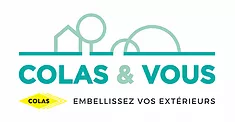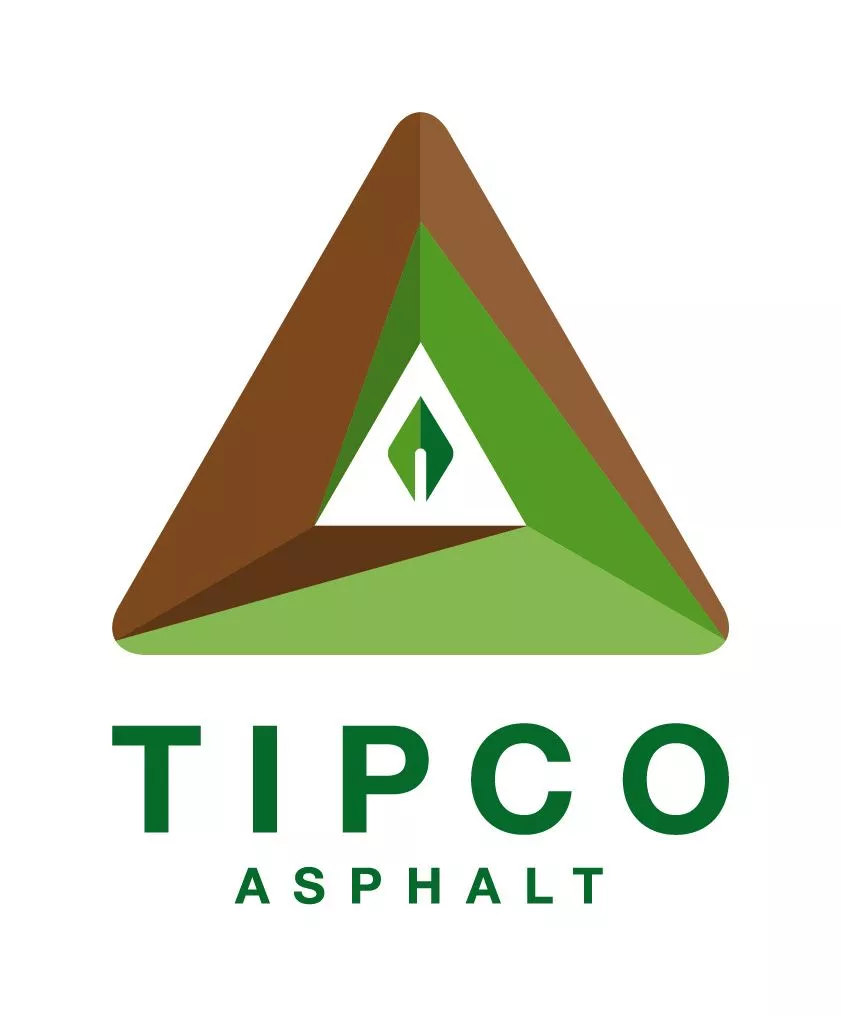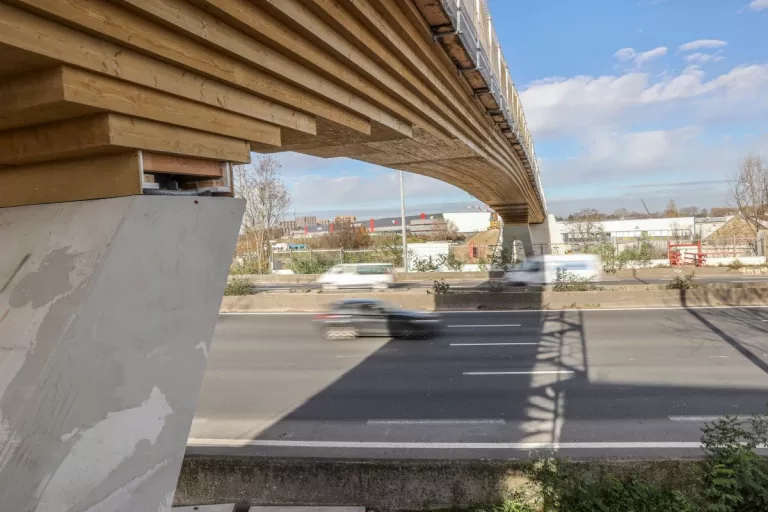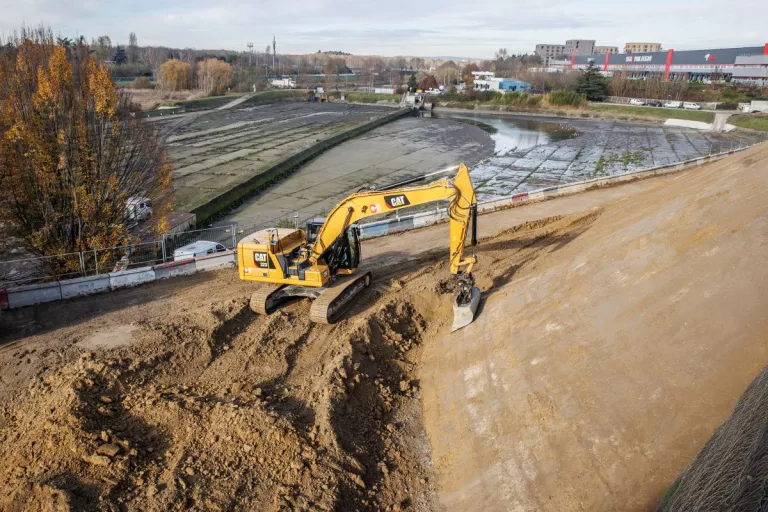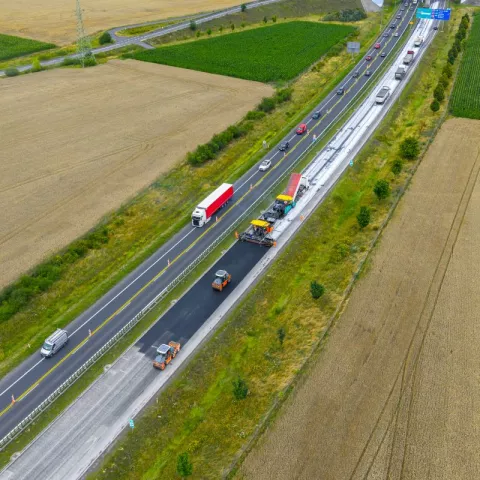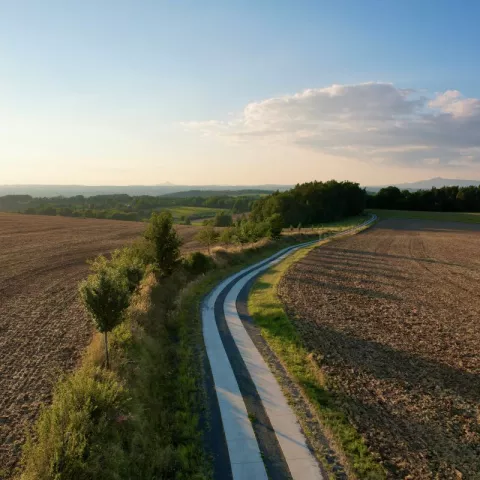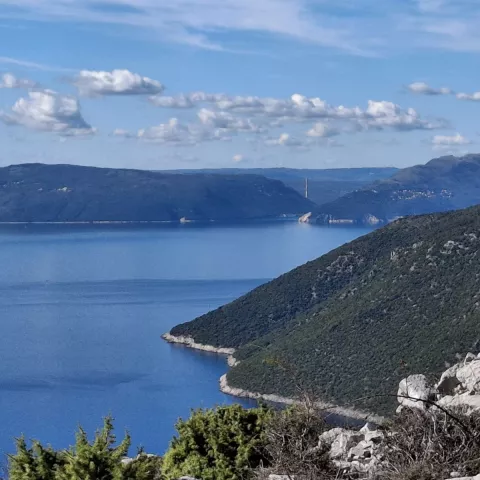A Footbridge at Le Bourget: Connecting Communities Through Soft Mobility
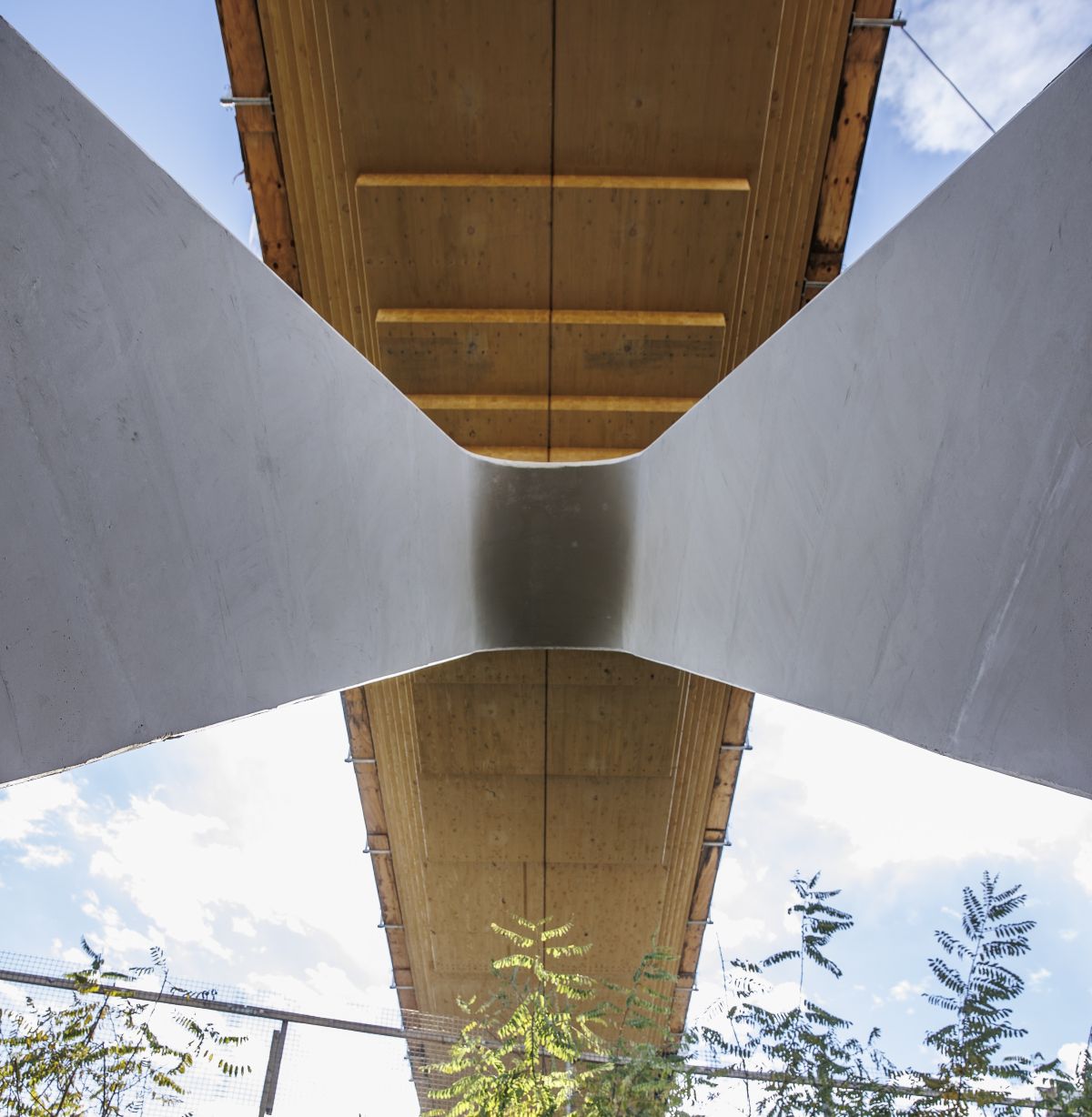
A new bridge for pedestrians and cyclists has been built between Dugny and Le Bourget, north of Paris. It might be modest in size compared to neighboring aviation facilities (Le Bourget business airport), but it is nonetheless strategic when it comes to meeting the contemporary challenges of safe and sustainable mobility.
Led by Colas, the project reflects a determination to harmoniously integrate soft mobility into a complex site with significant technical and logistical constraints.
A Pivotal Project to Connect Two Dynamic Towns
Located in a dense urban environment, the bridge is designed to:
- Effectively link business parks with residential neighborhoods,
- Provide a safe crossing for pedestrians and cyclists in an area with heavy traffic,
- Make travel more fluid by limiting conflicts with motor vehicles.
Straddling the A1 highway, the bridge is exclusively for pedestrians and cyclists. Designed to connect major sites during the Paris Olympics, the project is part of a broader urban development plan for the Seine-Saint-Denis area, improving accessibility while at the same time supporting evolving uses.
The structure connects the Le Bourget sports complex (which hosted the climbing events) to the town of Dugny, where the Media Village was located. Constructed with the aim of also benefiting the wider community after the event, the bridge guarantees faster journeys and promotes active mobility, particularly for residents of the two municipalities. The eye-catching 100-meter bridge was built from timber sourced in French forests. It was this innovative, low-carbon component that won over the client and enabled Colas to secure the contract.
“The span between two supports is 50 meters,” explains Paul de Saint André, Works Director with Colas’ Civil Engineering division. “Its design, architectural dimension, and the materials used make it a prestigious structure!”
Tried and Tested Colas expertise in Footbridge Construction
Here, Colas draws on cross-functional expertise acquired through numerous projects, in France and elsewhere. As with structures built in the Czech Republic, the construction of footbridges meets a dual objective:
This project reflects Colas' capacity to address contemporary urban mobility challenges, support local authorities in transforming their communities, rethink connections, and reconcile different uses.




